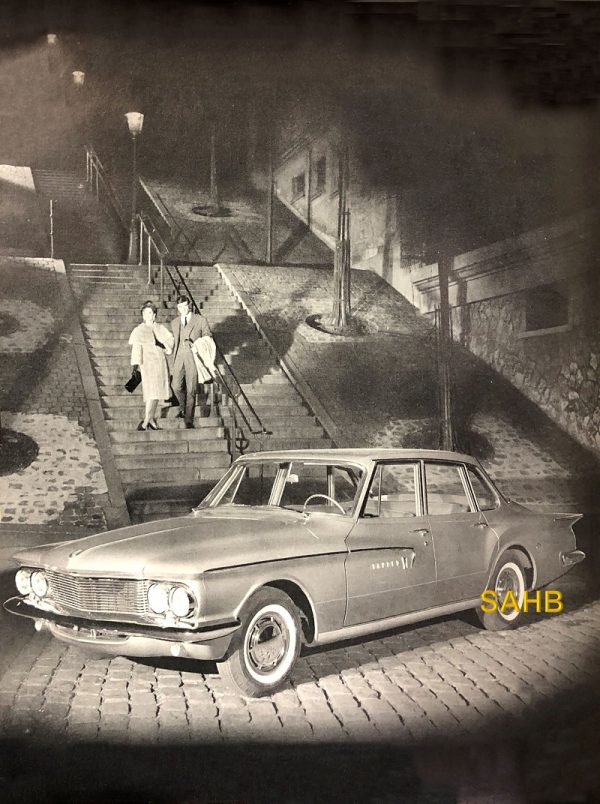
The Dodge Lancer name was used by the Chrysler Corporation three times: during the 1950s, 1960s and 1980s. The first version was a hardtop version of the full-sized 1955 Dodge, and was produced in that form until 1959. The second version, seen here, revived the Lancer name in 1961 for a Chrysler A platform-based compact that was marketed for just two model years and was replaced by the Dodge Dart. The third version brought the Lancer name back in 1985 for a front-wheel-drive mid-sized Chrysler H platform model, in production until 1988.
For 1961, Dodge applied the Lancer name to a higher-priced, upmarket badge-engineered version of Chrysler’s Valiant compact. All body styles of the Valiant were also available on the Lancer: two- and four-door sedans, two-door hardtop, and a four-door station wagon.
A survey of 1961 Lancer owners by Popular Mechanics based on a total of 1,023,938-mile (1,647,868 km) miles driven reported that 77.6.2% rated their cars as excellent with handling, comfortable ride, power/performance, and styling as their top likes.
The Lancer wheelbase and body shell were identical to those of the Valiant, but interior and exterior trim were more luxurious for the Lancer. Lancers featured round taillights and a full-width grille, instead of the Valiant’s cat’s-eye taillights and central grille.
The Lancer used the slant-6 engine. The base engine was the 170 cu in unit, rated at 101 bhp. The optional power package consisted of the larger 225 cu in engine, rated at 145 bhp. After the start of the 1961 model year, a die-cast aluminium version of the 225 engine block was made available. The aluminium 225 weighed 45 lb less than the iron 170 and 80 lb less than the iron 225. Any of the available engines could be equipped at the dealer with Chrysler’s Hyper-Pak parts kit for a significant power upgrade to 148 bhp for the 170 or 196 bhp for the 225.
Transmission was either a Chrysler-built A903 three-speed manual with the shifter on the floor in 1961 and on the steering column in 1962, or a pushbutton-operated A904 Torqueflite three-speed automatic.
In the 1962 NHRA Winternationals, Wayne Weihe won the C/FX (Factory Experimental) class with a Hyper-Pak-equipped Lancer, clocking a 15.67 for the quarter-mile. The “Golden Lancer” of Dode Martin and Jim Nelson was one of the fastest compacts on the strips in 1962, fitted with a 413 cu in Chrysler RB V8 engine modified by the Chrysler engineers’ “Ramchargers” racing team. The Golden Lancer raced successfully in A/FX class and could do the quarter-mile in 12.68 seconds at 113 mph.
There is a definite European connection to the Dodge Lancer and Chrysler Valiant of this period. These cars were often seen across the continent; in France, they were imported by Chrysler’s Simca network. This Snapshot was almost certainly taken in Paris for Simca publicity.
Image courtesy of The Richard Roberts Archive: www.richardrobertsarchive.org.uk







Leave a Comment